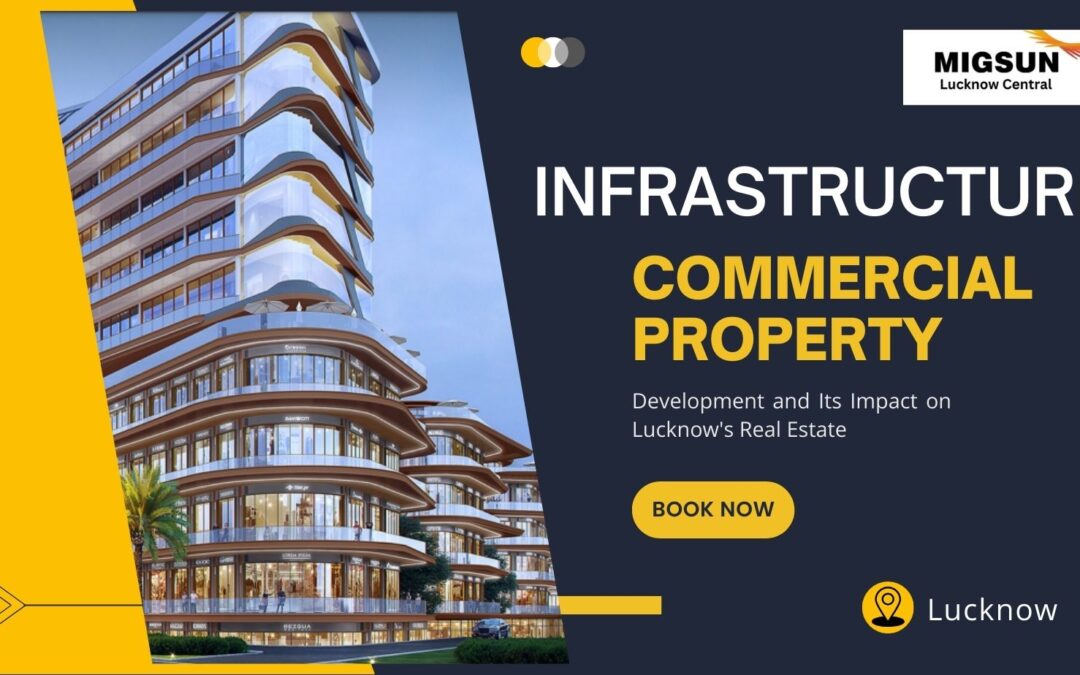Introduction:
Lucknow, the historic capital city of Uttar Pradesh, is undergoing a transformative phase of infrastructure development that is reshaping its commercial property sector. From extensive road networks and metro rail expansion to airport upgrades and industrial corridors, infrastructure projects are not only enhancing connectivity but also fueling economic growth and attracting investments. This article delves into the significance of infrastructure development in Lucknow and its profound impact on the city’s commercial property sector, offering insights into the emerging trends and investment opportunities.
The Infrastructure Renaissance:
Lucknow’s infrastructure renaissance is propelled by a vision to modernise the city’s transportation networks, utilities, and public amenities to meet the needs of its rapidly expanding population and growing economy. The construction of the Lucknow Metro, comprising multiple phases, has revolutionised urban mobility, providing residents and businesses with a convenient and efficient mode of transportation. Additionally, road widening projects, flyovers, and underpasses are alleviating traffic congestion and improving connectivity between different parts of the city, unlocking new areas for commercial development.
Connectivity Enhancements:
Enhanced connectivity is a game-changer for Lucknow’s commercial property sector, opening up new corridors and driving demand for office spaces, retail outlets, and logistics hubs. Areas along the metro corridors and major highways are witnessing increased investor interest and development activity, as businesses seek strategic locations with easy access to transportation hubs and key markets. Moreover, improved connectivity to neighbouring cities and industrial clusters is facilitating seamless business operations and supply chain management, further catalysing commercial real estate growth in Lucknow.
Impact on Commercial Property Market:
The ripple effects of infrastructure development are palpable in Lucknow’s commercial property market, with significant implications for investors, developers, and occupiers alike. Prime commercial locations near metro stations and major road arteries are experiencing heightened demand, leading to appreciation in property values and rental rates. Retail properties in high-traffic areas and mixed-use developments are also witnessing increased footfall and sales, as improved connectivity attracts shoppers and enhances the overall consumer experience.
Emerging Investment Hotspots:
Infrastructure-led growth is giving rise to emerging investment hotspots in Lucknow’s commercial property sector. Areas such as Gomti Nagar, Hazratganj, and Shaheed Path are evolving into vibrant commercial hubs, offering a mix of office spaces, retail outlets, and hospitality establishments. The presence of metro stations, upcoming commercial complexes, and planned infrastructure projects in these areas is attracting both domestic and international investors seeking high-growth opportunities in Lucknow’s burgeoning real estate market.
Opportunities for Developers:
For developers, infrastructure development presents a wealth of opportunities to capitalise on the growing demand for commercial properties like the Migsun New Project in Lucknow. Strategic land acquisitions near upcoming metro stations and transportation hubs, coupled with innovative design and sustainable development practices, can create value-added commercial projects that cater to the evolving needs of businesses and consumers. Moreover, collaboration with government agencies and public-private partnerships can expedite project execution and enhance the overall quality of infrastructure in Lucknow.
Challenges and Considerations:
While infrastructure development brings immense opportunities, it also poses challenges and considerations for stakeholders in Lucknow’s commercial property sector. Land acquisition issues, regulatory hurdles, and project delays are common challenges that developers may encounter during the implementation of infrastructure projects. Additionally, the need for sustainable urban planning, environmental conservation, and inclusive development must be prioritized to ensure the long-term viability and resilience of Lucknow’s commercial real estate market.
Government Support and Policy Initiatives:
The Government of Uttar Pradesh has been proactive in promoting infrastructure development and investment in Lucknow through various policy initiatives and incentives. Schemes such as the Uttar Pradesh Infrastructure and Industrial Investment Policy aim to attract private investment in infrastructure projects, providing financial incentives, tax breaks, and expedited approvals to eligible developers. Moreover, initiatives to improve ease of doing business, streamline land acquisition processes, and enhance infrastructure financing mechanisms are further bolstering investor confidence and catalyzing development in Lucknow.
Conclusion:
In conclusion, infrastructure development is playing a pivotal role in shaping the future of Lucknow’s commercial property sector, unlocking new opportunities for growth, investment, and urban development. By leveraging the transformative power of infrastructure, stakeholders can capitalize on the city’s economic potential, enhance connectivity, and create sustainable, inclusive spaces that enrich the lives of residents and businesses alike. As Lucknow builds tomorrow, the synergy between infrastructure development and commercial real estate investment will continue to drive prosperity and progress in the city for years to come.

